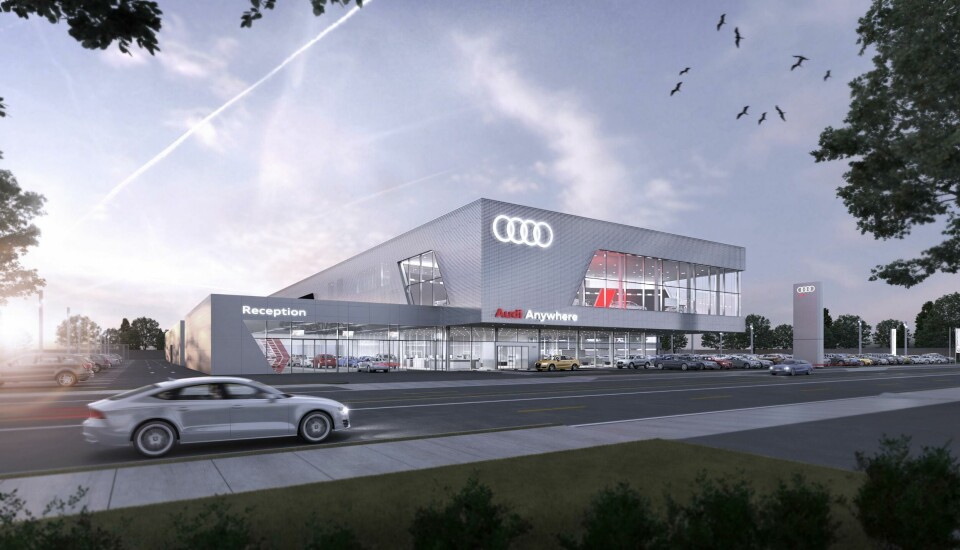Covid-19 has accelerated digital sales and servicing say carmakers
The impact of Covid-19 has accelerated the adoption of digital tools in the sale and delivery of vehicles, as well as aftersales maintenance.
Speaking last week at the online Reuters virtual automotive summit, Scott Keogh, CEO and president at VW Group of America, said that along with improved margins and liquidity, Covid-19 had pushed the adoption of digital tools.

“We were in a constant debate on digitising the sales process [but now] dealers have moved on that aggressively,” he said.” If there is any one thing about an independent franchise, they move quickly when there is a challenge. I think they have cut their costs and the move on digitisation has meant their profitability is better. These are longer-term healthy things.”
Ford’s CEO, Jim Farley, said the impact of Covid-19 on the retail of its vehicles was a gift both for the carmaker and its dealers. The forced closure of showrooms because of the pandemic forced dealers to use digital tools to complete remote sales and changed the ratio of sales operatives per vehicle for the first time in 20 years, he said.
Remote services
That was also something Audi has seen in the US, according to Daniel Weissland, president of Audi of America. The carmaker had already been providing a customer initiative called Audi At Your Door, which provided personal delivery or pick up of a vehicle for a range of services, including test driving, purchasing and maintenance. That service took off during closure of the physical dealerships.
“We wanted to enable the customer to still purchase or service their cars if needed, but in a remote and safe environment,” said Weissland. “I think almost all of our dealers participated and we saw some great results from that.”
That momentum is something that will now continue, according to Weissland, as customers look for a time-saving and seamless experience in sales and repair.
“If you choose you can get your car appraised at home, you can get your credit approved and pick out your car, your payment and terms, and we can bring the car to you, so you don’t need to physically come into the dealership at all,” said Weissland.
For the last three years Ford has also been offering a pick-up and delivery service for customers of its Lincoln brand in the US, a service called Lincoln Service Valet. Farley said the service had been working well and was something the carmaker was looking to extend.
Alternatively, those remote services can go hand-in-hand for those customers still intent on visiting the dealerships at some point in the process. Farley noted that while customers embraced the digital means to buy or lease a car a lot them still wanted to visit the dealership.
The next question for Ford is whether to curate the third-party digital tools or give offer a choice to the dealers for selection according to need and preference. A third option is to provide a Ford e-commerce platform as part of an end-to-end brand. Farley said that was a big decision for the company and one it was working through at the moment.
Impact on aftersales
Carmakers have also put more emphasis on the pick-up and return of a vehicle for maintenance work, along with the provision of a temporary replacement vehicle.
“If your car needs maintenance we will bring you a car to drive, an Audi, and we will bring your car back to you when you are done,” said Weissland. “All at no extra charge. We just think it is the right way to treat the consumer. They are at the centre of everything we do.”
One issue to be addressed, however, relates to the development of predictive maintenance and the coherent transfer of data to the dealerships, which use a variety of dealer management systems (DMS). Smart components in the vehicle are now able to remotely transfer data on functioning that enables OEMs to forecast when something is likely to need fixing. Sharing that information with the dealer network is something Farley said was currently a complication.
“We are going to be doing predictive failure,” he said. “We know when a particular component is probably going to fail based on the data sets we are getting off the vehicle. We could share that with the dealers but if they all have different DMS providers, it gets a lot more complicated to schedule an appointment.”
Lessons from commercial
Ford’s commercial vehicle business is also helping the company refine its remote digital services for the retail passenger car market. Commercial vehicles represent a third of Ford’s global production and it has around 700 dedicated commercial dealerships operating on low-cost models. The company has been accelerating toward remote services in this sector for some time, with drop shipments made direct to the customer.
He said Ford was lucky to have such a large commercial vehicle business, a segment that has been accelerating towards remote and will continue to do so. He added: “This is really a big gift to us as a company. We can switch lessons from commercial over to retail customers. We are very fortunate because we are learning things on commercial retail that we can apply to retail, like largescale remote services.”
One of those lessons is speed of service, given that the longer a commercial vehicle is out of service the more it costs the business using it. That immediacy of service is something customers are demanding and something that Ford is keen to transfer to the retail side of the business.





